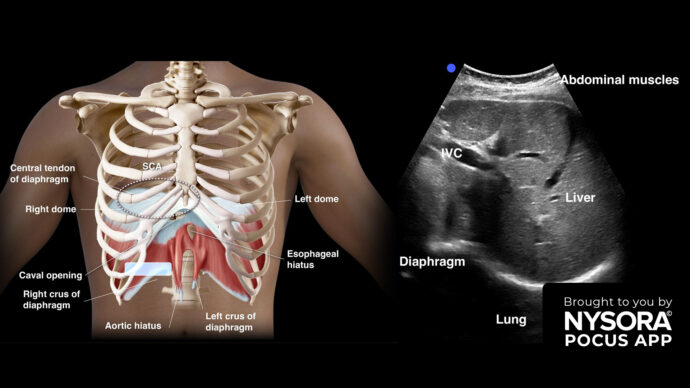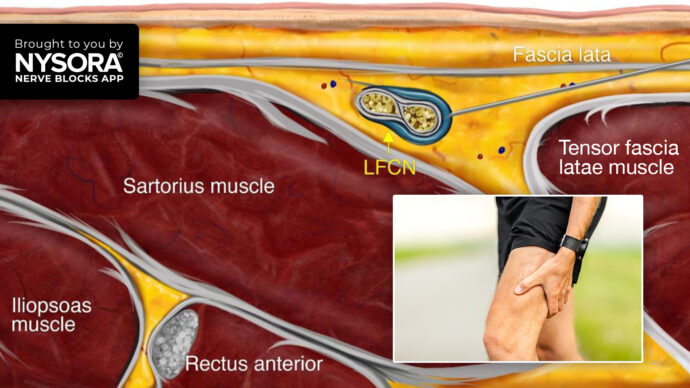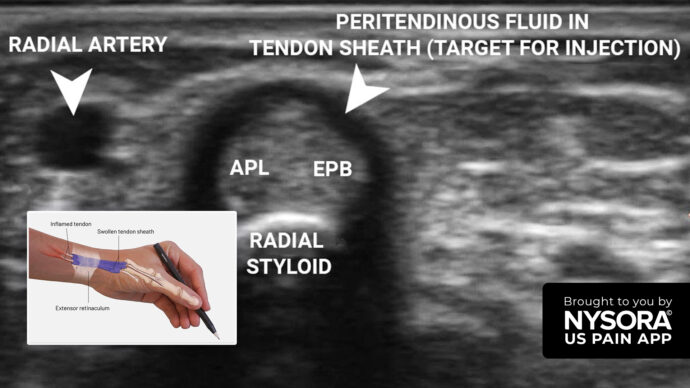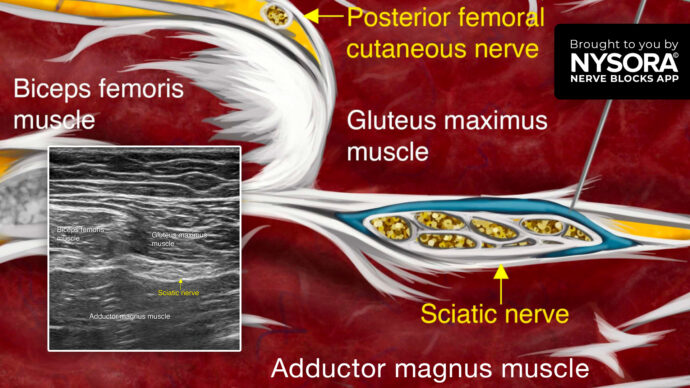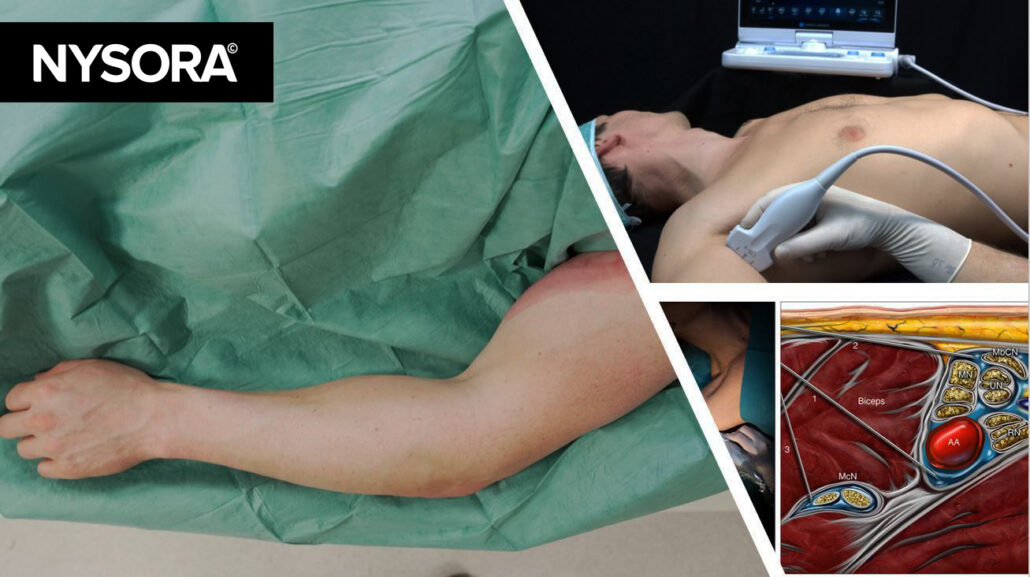
Case Study: Biceps tendon rupture
Biceps tendon ruptures may occur in patients with pre-existing rotator cuff tears or impingement syndromes, during athletic activities, or due to aging and the use of corticosteroids.
It leads to weakness of the elbow and forearm if not repaired. Therefore, repair should be undertaken within 3 weeks of the injury, or as early as possible.
Our go-to anesthesia technique for all biceps tendon ruptures is the axillary brachial plexus block with 0.5% ropivacaine. As per standardized protocol, the volume is limited to 20 mL.
- 8 mL is injected below the axillary artery.
- 8 mL is injected above the axillary artery.
- 4 mL is for the musculocutaneous nerve, essential for this surgery to allow relaxation of the biceps muscle.
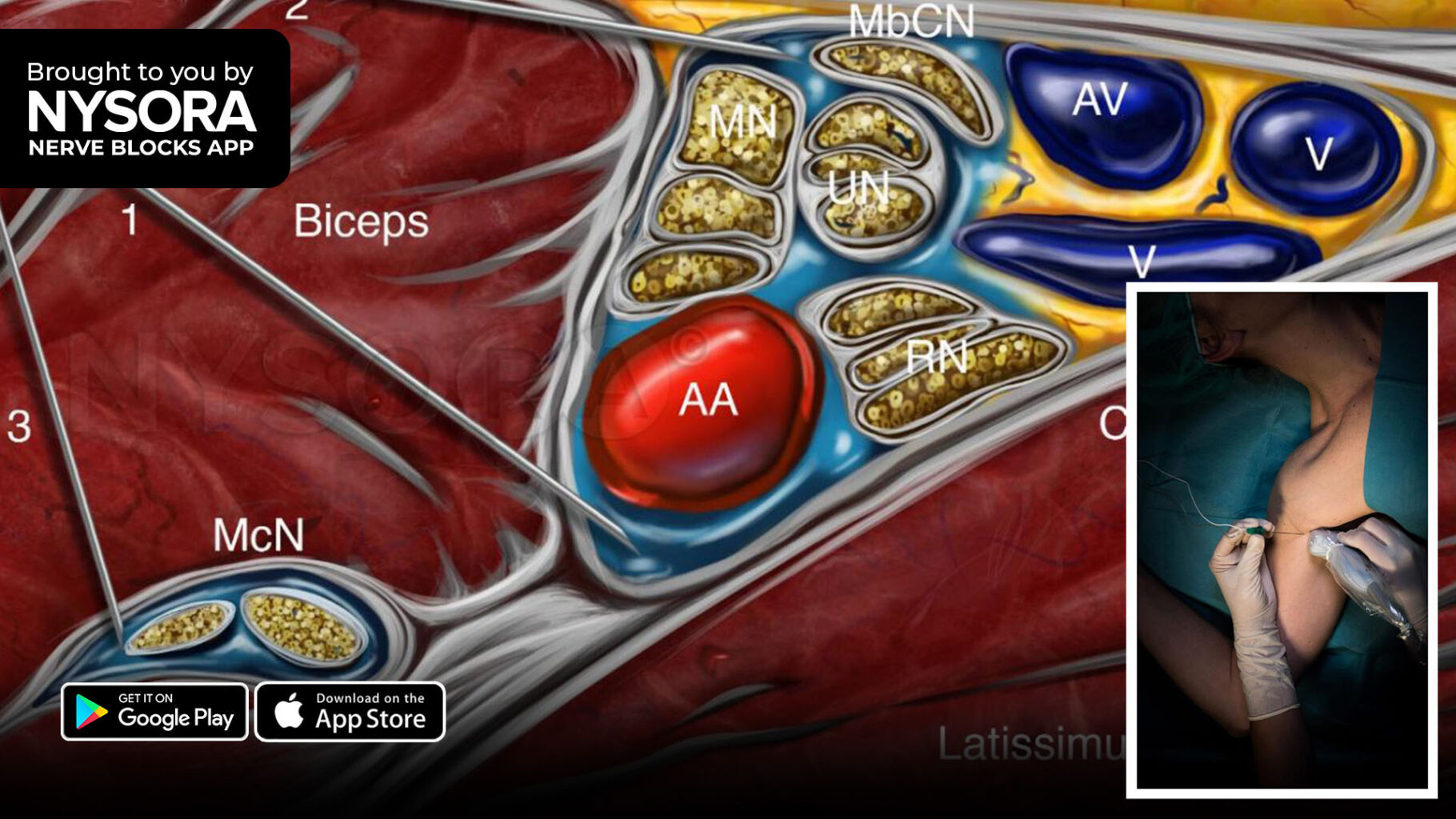
Axillary brachial plexus block; Reverse Ultrasound Anatomy with needle insertion in-plane and local anesthetic spread (blue). AA, axillary artery; AV, axillary vein; McN, musculocutaneous nerve; MN, median nerve; UN, ulnar nerve; RN, radial nerve; MbCN, medial brachial cutaneous nerve.
For more case studies like these and the complete guide to the 60 most frequently used nerve blocks, download the Nerve Blocks App HERE. Don’t miss the chance to get the bestselling NYSORA Nerve Blocks App also in book format – the perfect study companion with the Nerve Blocks app!
